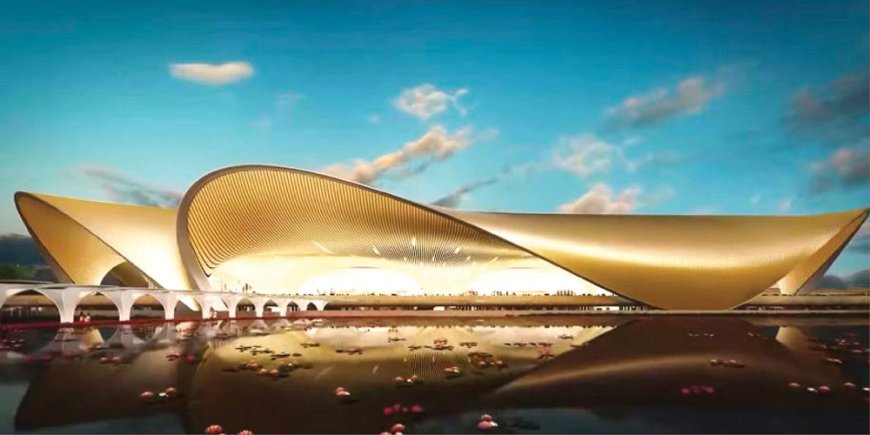There is a need to build a live digital model of entire airport in order to have efficient operations.

Nirmal G. Humbad
How do you look at the current scenario of the Indian airports and aviation sector?
The aviation sector in India has emerged as one of the fastest growing sectors in the country, with rise in air travel demand going up considerably. It is necessitating and demanding the development of a robust aviation sector ecosystem. With the rising middle-income households, increase in low-cost carriers, connecting the remote dots with new airport infrastructure and supportive government policies have given a positive push to the aviation sector.
Though Public-Private Partnership (PPP) in airport sector has long gestation periods, the implementation of PPP in airport sector has become a success story. PPP format is undergoing a change. PPP at airports has added advantage in creating world-class airport infrastructure and delivering efficient and quality services to the airport passengers. Because of enhanced revenues from such models, focus on developing airports at Tier-II and Tier-III cities can be made feasible. PPP projects allow Value Engineering but it should be done with due considerations of airport as a whole and not at the cost of Opex. PPP operators should look into Life Cycle Cost, i.e. Capex and Opex, instead of just looking for Capex while procuring capital cost equipment.

How is the airport infrastructure development picking up in the country?
Today, the country has 157 operational airports including water aerodromes and heliports. To meet the growing demand, it has become imperative to increase the capacity of airport infrastructure, both in terms of numbers and also in terms capacity expansion.
There has been a significant upsurge in the air travel demand. In FY 23-24 the total passenger availing air transport is around 377 million, whereas, the story was quite different few years back, say in 2014 with 169 million passengers using air transport. In spite of situations like pandemic, the air travel demand remained in increasing trend with a growth of 123% in last 10 years, except setback for few years.
Air cargo has also shown significant growth - from 2,280 MT to 3,366 MT, i.e. approximately 48% growth in the last 10 years.
With rise in air travel demand, the concept of Twin City Airports is becoming essential. In Delhi NCR - DIAL and Jewar, in Mumbai - MIAL and Navi Mumbai, then Mopa and Dabolim in Goa. The planning of more such six ‘Twin City’ Airports by 2030 is in the pipeline in order to decongest the existing major airports.
Many existing airports are choked up because of limitations being faced by them like Air Side Constraints at Mumbai or flying time restrictions at Pune Airport. Mumbai is getting new airport soon and Pune city needs a greenfield airport.
What is your opinion about the new airport facilities adding to India’s economic development?
Any transport infrastructure development triggers economic growth. Air transport improves connectivity within the country and also with rest of the world. India is aspiring to become the third-largest economy in the world, with a GDP of $5 trillion. And better air infrastructure is essential to achieve this target.
Efforts are suggested to make Indian airports ‘Hub Airports’. India being a large country such strategic consideration should be seriously considered.

Which are your major airport projects currently under execution?
We are working on Dhaka International Airport, Navi Mumbai International Airport, Dehradun Airport, Ratnagiri Airport and so on, apart from typical Engineering and Project Management Consultancy, we are involved in strategic advices, due diligence, transaction advisory, and supporting lenders who are lending large PPP projects in airport sector.
The second phase of Dehradun Airport project was recently inaugurated on 14 February 2024. Inspiration of local heritage like Bramhakamal and Char Dham, and Energy Efficiency are key elements in our design of this airport.
With the Dehradun Airport project, certain landmarks like ‘The Terminal Art wall mural’, which is certified as the largest wall mural in World Book of Records, London. Our design objective was to have a modern energy-efficient terminal targeting GRIHA 4 rating. Green building concepts are applied from planning to operations as part of Dorsch’s sustainability development initiatives.
Our out-of-the-box approach at Dhaka airport helped us to reduce Capex and Opex considerably.
Navi Mumbai International Airport is one of the mega projects ongoing currently and envisaged to be operational by early 2025. We completed techno-economic viability study in record time of 30 days, which helped to achieve early Financial Closure.
What are the technologies and methods that help faster and efficient execution and operations of airport projects?
Efficient planning and a high-level capacity building exercise of construction contractors, construction equipment manufacturers and airport equipment manufacturers like baggage handling system, passenger boarding bridges is suggested to be carried out.
To have better and efficient O&M of airports, enhanced usage of technology, with used cases is a must. There is a need to build a live digital model of entire airport in order to have efficient operations and data-based decision making. Tools like BIM, Digital Twin will help this purpose.
Technology can handle MEP services of airports more efficiently. Technology can replace some the elements of physical infrastructure of the airport. Digital ATM, Unified Communication, Power Over Ethernet, IoT, AI/Generative AI are strongly recommended. Digital ATM is already implemented elsewhere in the world.
In order to provide advanced technology solutions, in addition to in-house skill set, we rely on our technology partners i.e. CISCO, Bentley and TAV Technology. They bring in a lot of value to our consulting services.
What opportunities do you look forward for your business in the current scenario?
Airport as a business is complex, sensitive and is different from many other businesses. Over the last few years, we have gained experience in skills like master planning, terminal planning, air side infrastructure development, traffic forecasting, financial modeling, due diligence, transaction advisory, climate change mitigation measures etc. And having built such strong technical and managerial skills in airport sector, we are keen to bring great value to the owner by way of strategic advisory services, assisting private sector in better and effective implementation of PPP projects, and transform brownfield airports with usage of modern technology. We have developed a full suite of ‘Smart Airport’ which will change airports to a much better and more efficient place.
What is your vision on Indian airport and aviation sector?
Indian aviation sector is going to witness a high growth. In the coming years, Indian skies will foresee huge changes like Twin City Airports, Hub Airports, Digital ATMs, Smart Airports (with technology playing vital role), airlines with innovative business plans, PPP airports, operators targeting high non-aeronautical/non-aviational revenue.
Airport operators are suggested to consider suitable GTM strategies for their assets and be proactive keeping passenger experience as a key consideration.







